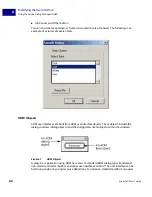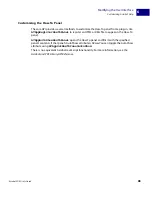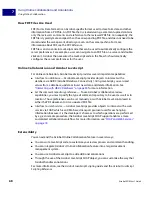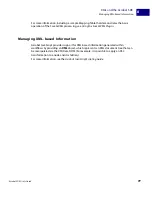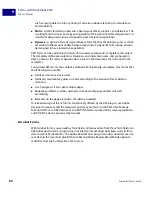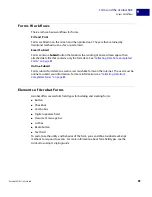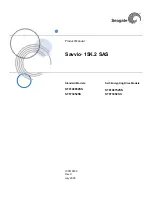
Using Online Collaboration and Annotations
Using Online Collaboration
7
68
Acrobat SDK User’s Guide
How FDF Files Are Used
FDF (Forms Data Format) is an Acrobat-specific format used to store form data and other
information from a PDF file. An FDF file that is created during a comment upload contains
only the reviewer’s comments and a reference to the reviewed PDF file. Consequently, the
FDF file is typically more compact than the corresponding PDF file, and does not need to be
stored under the same parent directory or even on the same machine. For more
information about FDF, see the
PDF Reference
.
FDF files can also contain JavaScript code that can be used to automatically configure the
server preferences. For example, a user can navigate to an FDF file on a server and double-
click on it. Acrobat then executes the JavaScript code in the file, which automatically
configures the server preferences for the user.
Online Collaboration and Acrobat JavaScript
For online collaboration, Acrobat JavaScript provides several important capabilities:
●
Interface to a database
— Acrobat JavaScript provides objects to interact with a
database via ADBC (Acrobat Database Connectivity). Using JavaScript, you can read
values from a database, update or insert new data, and delete information. See
“Interacting with OBDC Databases” on page 54
for more information.
●
Set the comment repository preference
— To use Acrobat’s collaborative review
capabilities, you must specify the type of comment repository to be used, as well as its
location. Those preferences can be set manually, or with Acrobat JavaScript placed in
either the PDF document or its associated FDF file.
●
Interface to a web service
— Acrobat JavaScript provides objects to interact with a web
service via SOAP, which is an XML-based transport protocol used for exchanging
information. Because it is the developer's choice as to which operations are performed
by a given remote procedure, the Acrobat JavaScript SOAP support enables a more
customized collaboration workflow. For more information, see
“SOAP and Web Services”
on page 74
.
Extensibility
You can extend the Acrobat Online Collaboration feature in several ways:
●
You can write JavaScript code to customize your review process and comment handling.
●
You can integrate Acrobat’s Online Collaboration feature into a larger document
management system.
●
You can use Acrobat JavaScript to add additional annotations.
●
Through the use of the Acrobat JavaScript SOAP object, you can customize the way that
Acrobat handles annotations.
For more information, see the
Acrobat JavaScript Scripting Guide
and the
Acrobat JavaScript
Scripting Reference
.
Summary of Contents for Acrobat 7.0.5
Page 10: ...Contents 10 Acrobat SDK User s Guide ...
Page 66: ...Modifying the User Interface Customizing Acrobat Help 6 66 Acrobat SDK User s Guide ...
Page 78: ...XML and the Acrobat SDK Managing XML based Information 8 78 Acrobat SDK User s Guide ...
Page 100: ...Providing Document Security Document Rights 11 100 Acrobat SDK User s Guide ...
Page 106: ...Working with Metadata Object Data 12 106 Acrobat SDK User s Guide ...
Page 110: ...Searching and Indexing Indexing PDF Documents 13 110 Acrobat SDK User s Guide ...
Page 118: ...Working With PDF Layers Working with Layers from a Plug in 15 118 Acrobat SDK User s Guide ...









